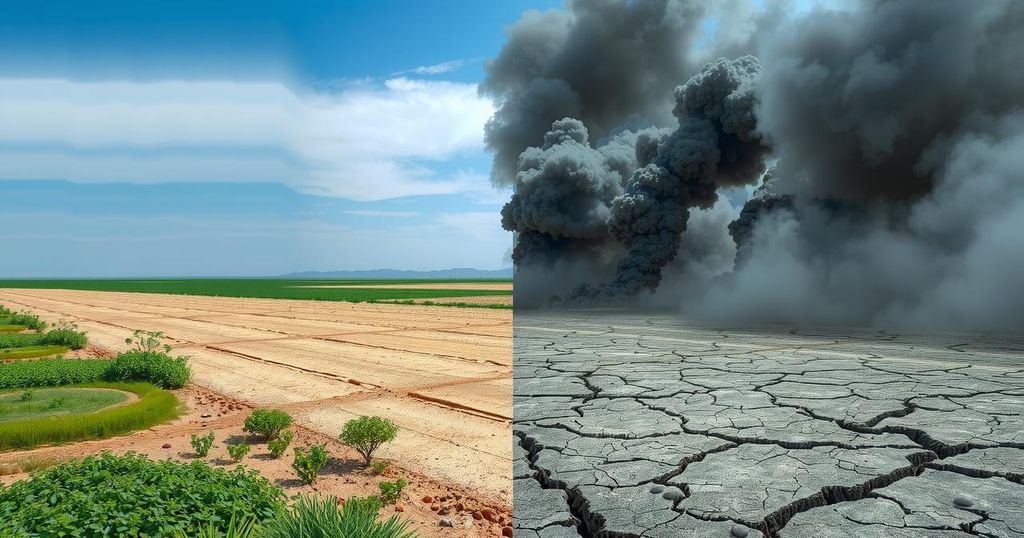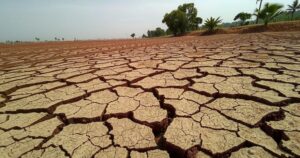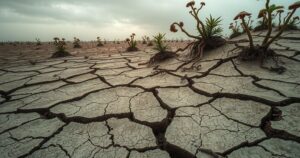Only Seven Countries Meet WHO Air Quality Standards; Pollution Issues Persist

The 2024 World Air Quality report identifies Chad and Bangladesh as the most polluted countries, with Delhi being the most polluted capital. Only seven countries met WHO air quality guidelines, and India has the majority of polluted cities. The report highlights a decline in PM2.5 levels in India and emphasizes the need for regional cooperation in addressing air pollution, particularly in South Asia.
The 2024 World Air Quality report by IQAir reveals that Chad and Bangladesh rank as the most polluted countries globally, with Delhi, India, recognized as the most polluted capital. Alarmingly, only seven nations achieved the World Health Organization (WHO) air quality standards. Moreover, pollution monitoring in Africa remains underreported, particularly due to previous US environmental policy rollbacks, which impacted the monitoring stations operated by US embassies worldwide.
In India, 74 of the 100 most polluted cities are located, indicating a slight decline from 83 last year. Nationally, PM2.5 levels fell by 7% to an average of 50.6 micrograms per cubic meter, notably exceeding WHO’s guideline by tenfold. Yet, despite its polluted cities, India ranks fifth in national pollution levels after Chad, Bangladesh, Pakistan, and the Democratic Republic of Congo. Only 17% of surveyed cities worldwide met WHO air pollution standards, emphasizing the global challenge, predominantly affecting the Global South.
Most pollution hotspots are situated in Asia while data reporting from Africa is lacking, as only 24 of 54 African nations provided information in 2024. This is a significant improvement since 2017 when only three African countries offered usable data. The recent air quality report highlights the critical gaps in monitoring due to the US government discontinuing its air quality data services, which affected many developing nations.
The report indicates that India’s extensive air quality monitoring is responsible for a more accurate national pollution average. This has resulted in countries like Pakistan and Bangladesh seeming more polluted as their networks primarily monitor urban areas, neglecting rural data. The region’s chronic pollution issues necessitate a regional approach, as pollutants do not respect borders; thus, India, Pakistan, Bangladesh, and Nepal should collaborate.
Researchers advocate for a “multilateral airshed approach” to effectively combat air pollution through cooperation among the South Asian nations, focusing on common pollution sources such as industrial emissions and agricultural burning. The report also emphasizes that despite expansion in monitoring infrastructure, many regions in India, especially smaller cities, remain under-observed.
The report highlights Byrnihat in Meghalaya, India, as the world’s most polluted location with PM2.5 levels averaging 128.2 micrograms per cubic meter, while Delhi, with 108.3 µg/m³, has recorded the highest pollution levels since 2019 due to vehicular emissions and other local sources. Notably, all Indian cities in the top 100 for pollution are within northern India, especially the Indo-Gangetic Plain, emphasizing significant meteorological conditions exacerbating pollution in the region.
Across the globe, China’s efforts have led to a decline in pollution in over 320 cities while Indonesia continues to be Southeast Asia’s most polluted despite a slight reduction in pollution. In Vietnam, pollution impacts GDP by an estimated 4%, prompting initiatives aimed at raising awareness and promoting sustainable agricultural techniques to mitigate this issue. Notably, the cleanest air was found in Hawaii, with a PM2.5 average of just one microgram per cubic meter.
In summary, the 2024 World Air Quality report underscores the serious global challenge of air pollution, particularly affecting countries in the Global South, such as Chad and Bangladesh. While India exhibits a high number of polluted cities, its extensive monitoring network allows for a lower national average. The report advocates for a cooperative regional strategy, particularly in South Asia, to manage trans-boundary pollution effectively and emphasizes the ongoing need for improved air quality monitoring, especially in developing nations. Furthermore, the need for a sustainable approach to combat air pollution and protect public health is underscored across various regions, including Vietnam and Indonesia.
Original Source: healthpolicy-watch.news






